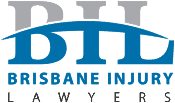A Guide to Claiming Workplace Injuries
What Kind of Injuries Can I Apply for?
Workplace injuries can range from serious illness, injury or damage (including amputations, fractures and brain injuries) through to less severe injuries such as strains and sprains (e.g. repetitive strain injury).
Examples of injuries include:
- Injuries suffered at work, as a result of work or during work activities
- Diseases caused by work
- Diseases or pre-existing conditions made worse by work
- Injuries suffered while travelling for work
- Injuries suffered while receiving medical treatment for a separate work injury
A work injury doesn’t have to be purely physical. Mental injuries such as those driven by stress, or leading to events such as a heart attack or worsening of a pre-existing condition can also be eligible for workplace injury compensation.
Types of Claims
There are two main paths when making a workplace injury claim. These are workers’ compensation and common law claims.
Workers’ Compensation
Workers’ compensation is a type of insurance that can pay the wages and medical costs of employees who have been injured due to their employment. In most cases, WorkCover Queensland is the provider of accident insurance for work-related injuries in Queensland (however it is possible to elect to self-insure).
These kinds of claims are “statutory claims”, and operate on a “no fault” basis. Compensation is paid regardless of who was at fault for causing the injury.
As long as the worker’s employment was a “significant contributing factor” to the injury, you should be entitled to claim compensation. It is only exceptional circumstances that prevent a worker from claiming for compensation benefits.
However, it is important to know that a workers’ compensation has some limits. The workers’ compensation insurer is only obligated to meet an injured worker’s medical and rehab costs and their wage benefits until the worker’s injury is stable and stationary. In this sense, Workers’ compensation is more like a statutory minimum or safety net.
All claims made in Queensland first must be lodged as a statutory claim before a common law claim can be lodged.
Common Law Claims
The second main option is a “common law claim” which entitles a worker to claim for all the loss and damage sustained as a result of their work injury.
In certain cases, common law claims will be more desirable. However, unlike the “no fault system” of workers’ compensation, a claim for common law damages is only possible if the workplace injury was caused in whole or part by the negligence of the employer (or a co-worker). If the employee was ruled responsible for some or all of the negligence, the damages awarded will be reduced.
The Workers Compensation Claim Process
When a workplace injury occurs you can also make a claim for workers’ compensation with WorkCover Queensland (or a self-insurer).
- You should first notify your employer immediately
- You then see a doctor to get a workers’ compensation medical certificate
- After this, you can lodge a claim with WorkCover Queensland. This can be done online at the WorkCover QLD website
- In serious cases, such serious injury or illness or a death, the incident must be reported to Workplace Health and Safety Queensland
Once a claim has been made, it’s allocated to a WorkCover Queensland claims representative to be decided upon.
WorkCover will generally contact both the worker and employer within three business days of the claim being made.
Lodging Common Law Claims
Common law claims are legal processes that go through a dispute resolution process and potentially lead to litigation.
As the first step, your lawyer will send a Notice of Claim for Damages to the employer and WorkCover. The notice sets out the allegations of negligence against the employer and the damages the injured worker claims to have suffered.
WorkCover then has six months to investigate the claim – with the assistance of the employer. Its lawyers act on behalf of WorkCover and the employer, and after investigations, WorkCover must either admit or deny that the employer is liable for the worker’s injury.
Once investigations are complete, the parties are required to make genuine efforts to negotiate an out-of-court settlement before starting court proceedings.
Negotiations usually involve meetings with all parties and their lawyers. If an out-of-court settlement is reached, the worker must agree in writing to release WorkCover and the employer from any further liability and to keep the settlement confidential.
This investigation and out-of-court negotiation stage might take up to 12 months altogether and if a settlement still hasn’t been reached then Court action commences.
It can take 12 months or more before a court trial is heard. During the trial, your lawyer will represent you and the employer and staff may need to attend to give statements.
Judgement from the court is usually delivered some weeks or months after the trial finishes.
Legal Guidance
Generally, you have three (3) years from the date of your work injury to make a claim.
However, some injuries are more complicated to diagnose. For example, an injury may have occurred over a period of time or it may be a latent injury that took time to manifest, especially in psychological injuries such as stress.
This is why it is so important to contact one of our expert Injury Compensation Lawyer as soon as possible.
For more information, get in contact with one of our personal injury law experts at info@brisbaneinjury.com.au or via phone on (07) 3009 8444.


